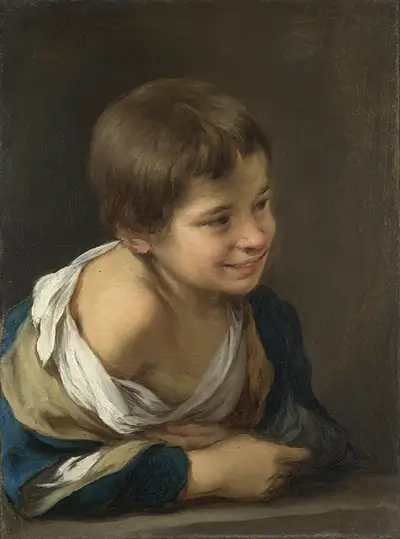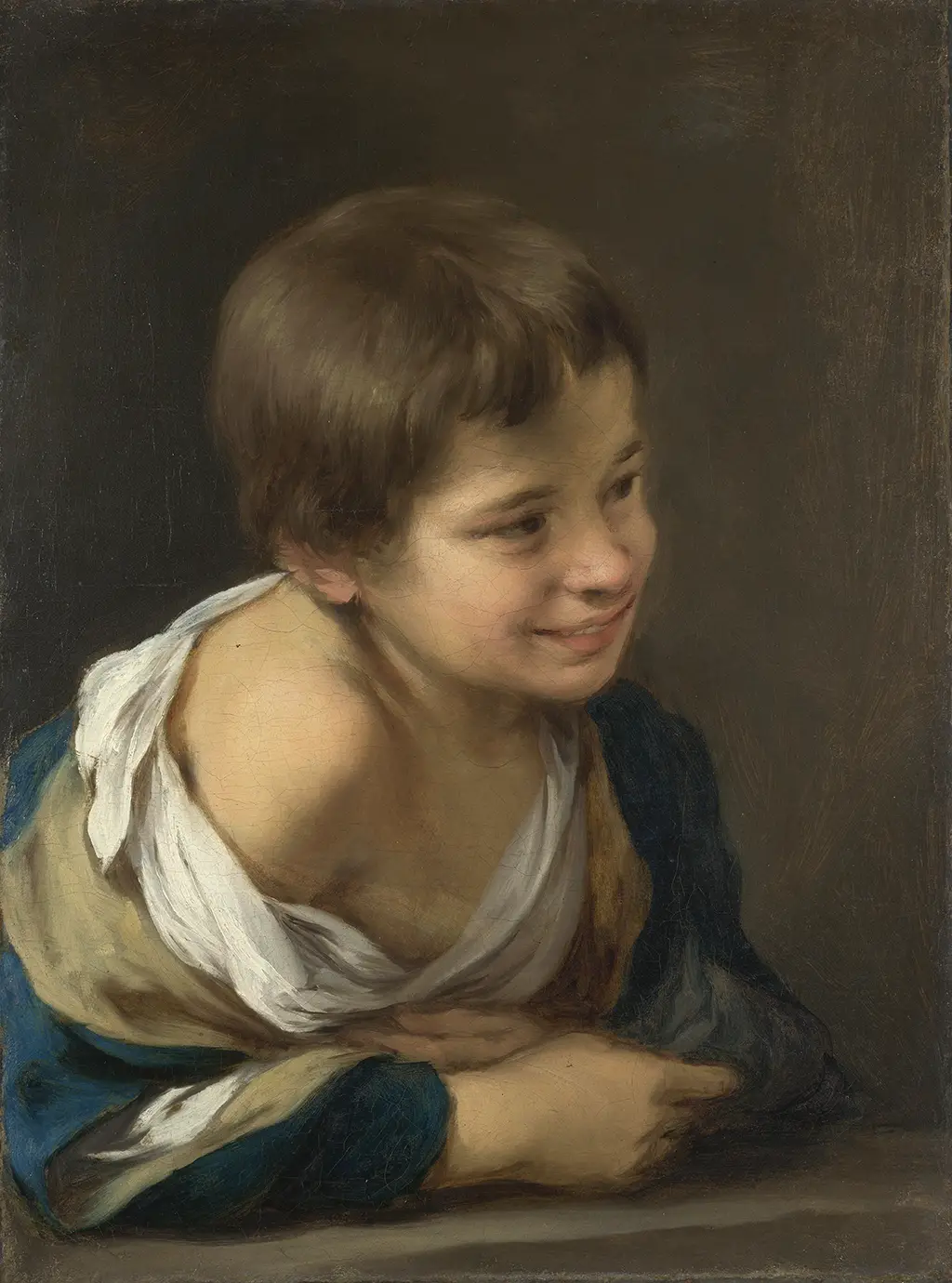This painting is dated at around 1675-1680, placing it fairly close to the end of Murillo's career. This relatively small portrait can now be found in the collection of the National Gallery in London, UK but has been displayed elsewhere from time to time.
The artist achieved great success across a number of different genres and one of his most popular was the use of local poor children from in and around the city of Seville. In most cases the artist would actually transform their difficult lives into imagery that was actually upbeat and hopeful, giving a charm to paintings such as the one found in front of us here - A Peasant Boy Leaning on a Sill. In this piece we find a young lad peering out from a small room whilst leaning on a sill. His clothes are hanging in an untidy manner, with no-one around to give him guidance. He seems unworried about this and displays as much innocence and happiness as the artist's portraits of models from richer backgrounds. Murillo is therefore reducing the gap which existed in Spanish society at the time, at least from the perspective of his own perceptions. In reality, of course, these differences existed and were extreme, but it did not mean that beggars and peasants could not be happy on occasion. One might compare this artwork to the likes of The Young Beggar and Two Women at a Window.
Disease would wipe out a huge section of the Seville population during the artist's lifetime and so he would become more and more familiar with the poorer parts of society as the city started to struggle financially. He helped out with charity work too, in conjunction with the Church, and this would have made him even more aware of the growing problems within the city. He therefore chose to focus on the lives of such people within his art, though he had already done so before these problems became particularly acute. You will discover beggar boys and other street children within a number of his paintings and he also found suitable markets that would be interested in acquiring such works. The one issue that complicated this plan was the reduced strength of the foreign trade carried out in Seville, making it slightly harder for the artist to do business once the city started to suffer. Genre paintings such as this became a big part of his success, though some still know Murillo more for his religious depictions.
This painting resides in the National Gallery in London, UK. They host a few items from Murillo's career but in general are more focused on Italian, British and Flemish art. You will discover most of the biggest figures in European art on display here and those specifically interested in Murillo would probably be better heading to the Prado Museum in Madrid or perhaps the London-based Dulwich Gallery instead. In terms of the items to be found in the National Gallery, you might be interested in the likes of The Baptism of Christ by Piero della Francesca, The Rokeby Venus by Diego Velazquez and Diana and Actaeon by Titian, though there is plenty more to see besides just those paintings. The venue is based in central London, at Trafalgar Square, where you will also be able to see the permanent display of Landseer's Lions.





